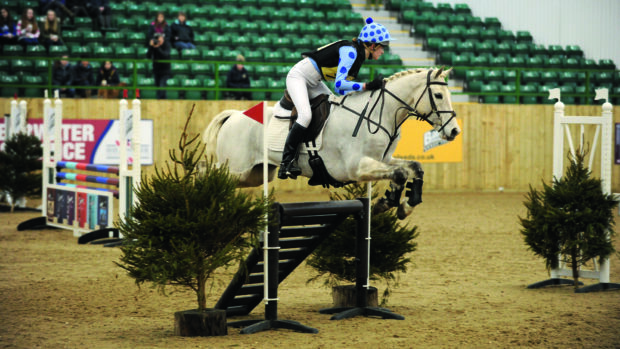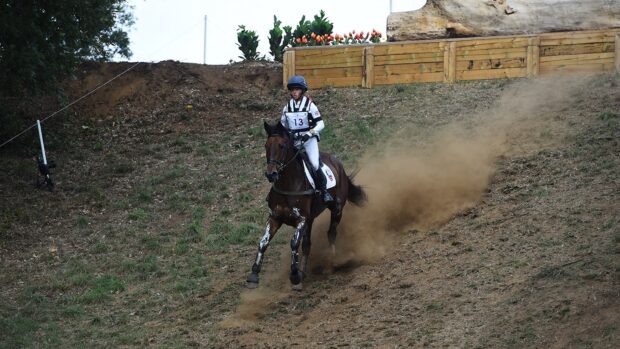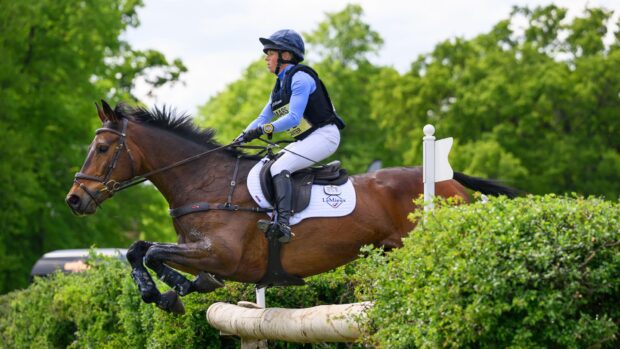He has won 14 four-star events, more than 50 three-day events and countless medals for the British eventing team. While attending the British Horse Society's coaching convention, William Fox-Pitt shared his advice and knowledge on training horses and riders for jumping. Here are the highlights...
1. A rider should always focus on the individual character of a horse when training — one method does not fit all.
2. A horse that is genuine on the flat usually translates through to its rideability and trainability while jumping.
3. When training or looking for a horse to jump, you want one that can think for himself, is clever on his feet and is ultimately safe — you want a horse to help you out if you’ve messed things up at a fence.
4. It is our job as riders to train a horse to think on his feet, with quick, clever and genuine reactions.
5. It is very important to train a horse to connect between hand and leg so that when jumping you can get from A to B with no fuss — if you don’t have this connection, you will find it is very hard to ride in a straight line, which then makes things tricky while jumping.
6. A huge factor in whether horses jump clear rounds is down to whether the rider has control of a horse’s outside shoulder. Recently, while training with Chris Bartle, he made us ride around with outside flexion, so that we could see the outside eye of the horse. He made a very good point that you rarely see showjumpers going around the Hickstead Derby with a nice, soft, inside bend. If you have this outside bend, then you have control of the outside shoulder.
7. You want the connection down the rein to feel like a nice, friendly, genuine handshake.
8. Always keep your leg on while jumping — think of it as giving your horse a cuddle — it is there to reassure the horse to keep going forwards. If you are reluctant to use your leg on because your horse is tense and buzzy, you still need to be giving them that ‘cuddle’ as a form of reassurance.
9. Good core strength in riders is paramount. If you’re strong through your core then you will ride with an independent seat, leg and hands in good balance.
10. I’m a big believer in not jumping too big in training — jumping large fences is a false aim. You’re much better off schooling over smaller fences to improve technique that will help you further down the line.
11. I’m also a massive believer in jumping from trot while training — this gets the horse thinking for himself and if they make a mistake, they know about it. It also means that horses and riders need to be sharp in their reactions. I have days at home where I will build courses out of objects such as barrels, gates and chairs and will jump them out of trot and on funny turns. This might not always be very pretty, but it is a very effective training tool.
12. If you are jumping from trot, it will be easier to prevent your horse from running out. If your horse does try to run out, don’t let him turn away from the fence, instead rein back, regain your line and then ask him to jump the fence again — this helps to teach your horse that running out is not an option.
13. If your horse lands in a bit of a heap after jumping a fence from trot, move him on. Likewise, if they go to run off, slow them down.
14. When training over narrow fences, start with wings next to the fence and then gradually move them further away until there are no wings. This helps to teach your horse to look for their next jump.
Like this? You might also enjoy reading these:
Fun, focus and footwork: must-have cross-country riding advice from Lucinda Green
‘Repetition is key’ — Jonelle Price’s top tips for solving cross-country problems
15. I always use groundlines in training as it gives the rider something to ride up to.
16. When walking a course, it is important that riders don’t become set in their ways about how many strides should be between each fence. As riders we have to be reactive and ride what we feel.
17. Try to jump on grass at home in a big space. If you always jump in an arena, you will be constantly riding in a contained rhythm which doesn’t represent the buzzy atmosphere of a competition. Make sure that when you get out into the grass space that you up the tempo of the canter to recreate what you might have to ride at a competition.




